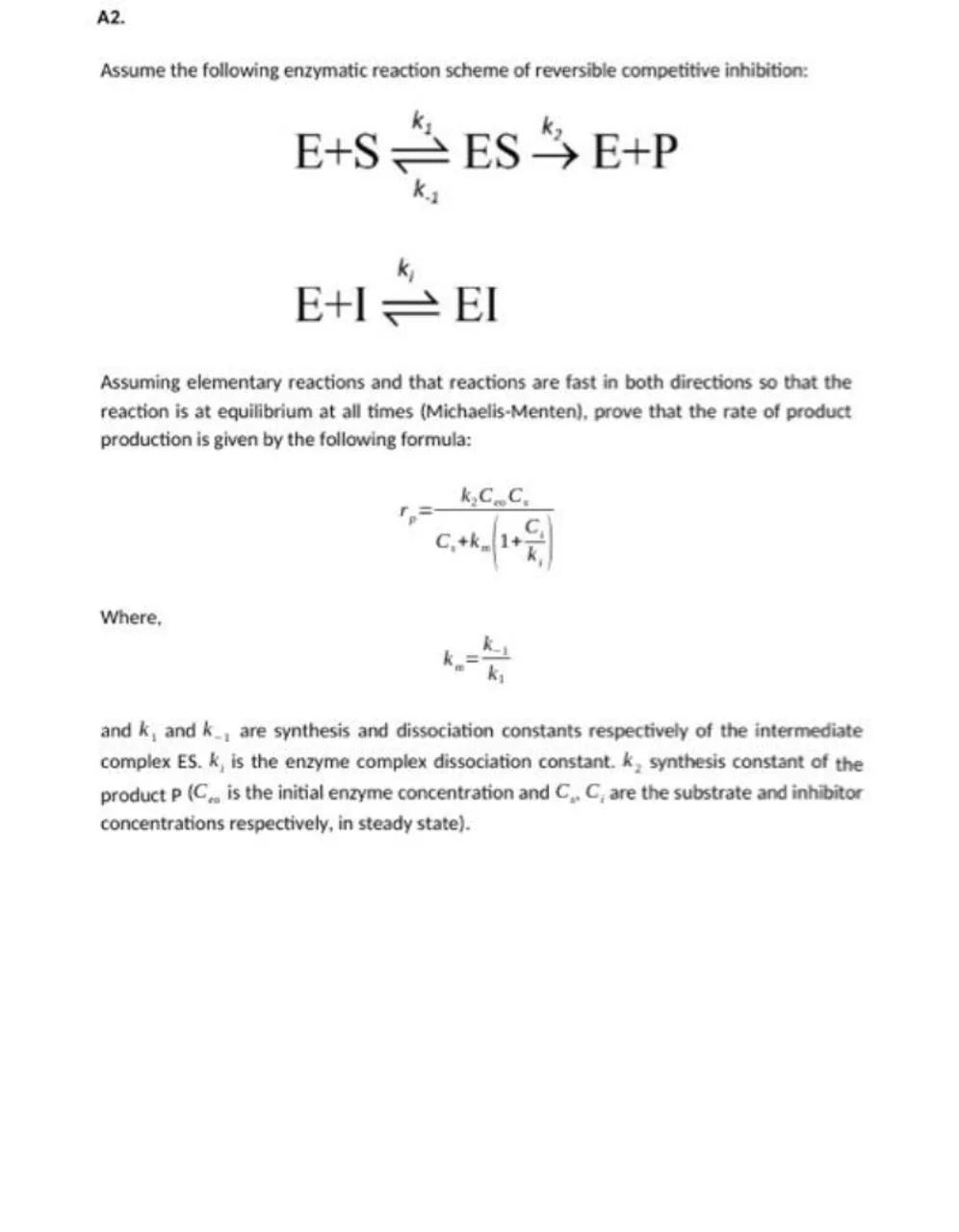
Sia
A2.
Assume the following enzymatic reaction scheme of reversible competitive inhibition:
Assuming elementary reactions and that reactions are fast in both directions so that the reaction is at equilibrium at all times (Michaelis-Menten), prove that the rate of product production is given by the following formula:
Where,
and and are synthesis and dissociation constants respectively of the intermediate complex ES. is the enzyme complex dissociation constant. synthesis constant of the product is the initial enzyme concentration and are the substrate and inhibitor concentrations respectively, in steady state).

Answer from Sia
Posted 10 months ago
Solution
1
Define Michaelis-Menten kinetics for the system: Michaelis-Menten kinetics describes the rate of enzymatic reactions where a substrate S is converted to a product P by an enzyme E. The formation of the enzyme-substrate complex ES is a key step
2
Write the equilibrium expressions: For the enzyme-substrate complex and the enzyme-inhibitor complex, the equilibrium expressions are given by for ES and for EI
3
Apply the steady-state assumption: The steady-state assumption implies that the concentration of the enzyme-substrate complex ES is constant over time, which leads to the Michaelis-Menten equation
4
Derive the modified Michaelis-Menten equation: Considering competitive inhibition, the presence of the inhibitor affects the availability of the enzyme to bind to the substrate. The modified equation accounts for the inhibitor by adding a term that includes the inhibitor concentration and its dissociation constant
5
Express the rate of product formation: The rate of product formation is proportional to the concentration of the ES complex and the rate constant . Using the modified Michaelis-Menten equation, express in terms of , , , , , and
6
Solve for $r_p$: By substituting the expressions for and into the modified Michaelis-Menten equation, solve for to obtain the given formula
Answer
The rate of product formation in the presence of a competitive inhibitor is given by the formula , where and .
Key Concept
The key concept is understanding the Michaelis-Menten kinetics and how it is modified in the presence of a competitive inhibitor.
Explanation
The explanation involves applying the steady-state assumption to derive the rate of product formation, which is affected by the presence of an inhibitor that competes with the substrate for the enzyme binding site.
Not the question you are looking for? Ask here!
Enter question by text
Enter question by image
Unlock Smarter Learning with AskSia Super!
Join Super, our all-in-one AI solution that can greatly improve your learning efficiency.
30% higher accuracy than GPT-4o
Entire learning journey support
The most student-friendly features
Study Other Question